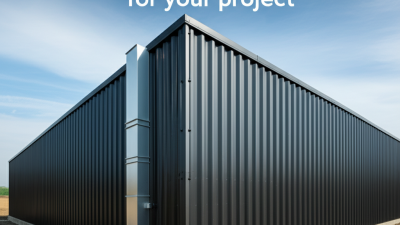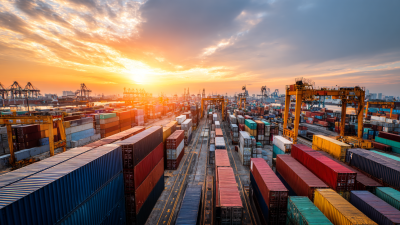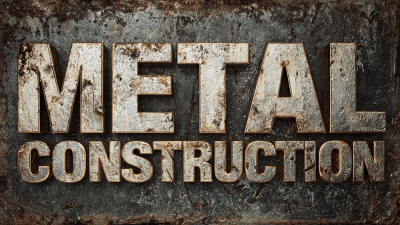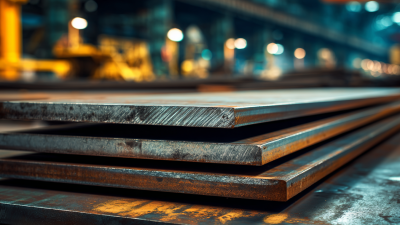
In today's construction landscape, the right choice of materials is crucial for the success and longevity of any project. Metal construction has gained prominence due to its unparalleled strength, durability, and sustainability. According to a report by the Metal Construction Association, metal building systems can reduce construction time by as much as 25% compared to conventional materials, making them an efficient option for developers and contractors alike. Additionally, the use of metal in construction can result in a lower carbon footprint, contributing to the industry's shift towards greener practices. As demand for innovative building solutions grows, understanding how to choose the right metal construction materials becomes essential. This guide will provide insights into key factors to consider, ensuring that your project not only meets performance expectations but also adheres to industry standards and best practices.

When selecting metal construction materials for a project, several key factors must be considered to ensure that the chosen materials meet both functional and aesthetic requirements. Firstly, the mechanical properties of the metal, such as tensile strength, ductility, and hardness, play a crucial role in determining its suitability for specific applications. For instance, structures that rely on high load-bearing characteristics may benefit from the use of steel or aluminum, which offer superior strength while remaining relatively lightweight.
In addition to mechanical properties, environmental factors are essential in the material selection process. The expected exposure to corrosive agents, temperature fluctuations, and moisture will influence the longevity and performance of the chosen metal. For projects in coastal regions, materials with high corrosion resistance, like stainless steel or specially coated metals, are recommended. Lastly, budget constraints should also be a consideration; evaluating the cost of materials along with their maintenance requirements can lead to more sustainable long-term choices. By carefully assessing these factors, builders can ensure the optimal performance and cost-effectiveness of their metal construction materials.
This chart displays the cost per kilogram of common metal materials used in construction, aiding in the selection process based on budget considerations.
When selecting metal construction materials for your project, evaluating strength, durability, and corrosion resistance is crucial. According to the American Institute of Steel Construction, structural steel boasts impressive tensile strength, ranging between 50,000 to 65,000 psi, making it a reliable choice for high-load applications. However, each project has unique demands that might make materials like aluminum or stainless steel more suitable. For instance, aluminum offers a good strength-to-weight ratio and excellent corrosion resistance, making it ideal for coastal environments where salty air may accelerate corrosion.
Tips: Always perform a thorough analysis of environmental conditions before deciding on a metal type. For projects exposed to harsh conditions, metals like weathering steel are engineered to develop a protective layer that can prevent further corrosion, extending the lifespan of your structure. A report by the National Institute of Standards and Technology highlights that materials with higher corrosion resistance can reduce maintenance costs by up to 40% over time.
Additionally, consider the longevity of the materials you choose. Galvanized steel, for example, can last decades with proper care, significantly reducing the need for replacements. It is beneficial to reference industry standards and data when making these decisions to ensure that your chosen material will withstand the test of time and environmental challenges.
When selecting metal construction materials for a project, understanding cost-effectiveness and availability is crucial. According to the Metal Construction Association, the average cost of steel has seen fluctuations, but recent reports indicate that hot-rolled steel prices ranged between $900 and $1,500 per ton throughout 2022. This variation can significantly impact budgeting, making it essential for project managers to stay updated on market trends. Alternatives like aluminum and zinc are also gaining popularity due to their lightweight properties and corrosion resistance, though they often come at a premium cost.
Another factor influencing the decision is availability. The World Steel Association notes that global steel production capacity is approximately 2.3 billion tons per year, with significant players like China producing nearly half. However, supply chain disruptions and geopolitical tensions can limit access to these materials, especially for specialized alloys or grades required for specific projects. Prospective builders should consider local suppliers and the potential for longer lead times when sourcing materials, balancing these considerations against project timelines and budget constraints.
When selecting metal construction materials for your project, it’s crucial to consider their environmental impact and sustainability. Metals such as aluminum and steel are widely used; however, their production processes can be energy-intensive and generate significant emissions. Opting for recycled metals can significantly reduce your project's carbon footprint. For instance, aluminum requires 95% less energy to produce from recycled materials compared to primary extraction, making it an eco-friendly choice.
**Tip:** Always inquire about the source of your materials. Choosing suppliers who prioritize sustainable practices can ensure that you’re making a responsible choice.
Another critical aspect is the longevity and lifecycle of the materials. Metals, when treated and maintained properly, can last decades, minimizing the need for replacements and reducing waste. Additionally, consider coatings and finishes that improve corrosion resistance, as these can extend the lifespan of metal structures.
**Tip:** Look for certifications like LEED (Leadership in Energy and Environmental Design) that indicate sustainable practices in the sourcing and manufacturing of materials. This can guide you in choosing the most environmentally responsible options for your project.
| Material Type | Recyclability | Carbon Footprint (kg CO2/kg) | Durability (Years) | Cost ($/kg) |
|---|---|---|---|---|
| Steel | Yes | 1.85 | 50 | 1.20 |
| Aluminum | Yes | 7.5 | 80 | 2.50 |
| Copper | Yes | 3.5 | 100 | 6.00 |
| Zinc | Yes | 1.0 | 50 | 2.00 |
| Titanium | Yes | 6.0 | 120 | 20.00 |
When selecting metal construction materials, aesthetic considerations play a crucial role in the overall design and functionality of a project. In recent developments, sustainable building trends influence these aesthetic choices, pushing architects and builders towards materials that not only provide visual appeal but also promote environmental responsibility. High-performance materials, such as steel and aluminum, offer durability while their finishes can be tailored for a modern look, making them ideal for creating striking facades that resonate with contemporary architectural styles.
A recent study indicates that the integration of innovative production technologies, including advanced coatings and treatments, enhances the aesthetic value of metals. For example, powder coating and anodizing can provide not only vibrant colors but also improved resistance to corrosion, ensuring that the visual integrity of the structure lasts over time. Furthermore, the switch towards sustainable practices suggests evaluating materials based on their lifecycle impacts. Emerging sustainable metals, produced with lower carbon footprints, exemplify how functionality can be married with an eco-conscious aesthetic, allowing projects to reflect modern design ideals while supporting the shift towards greener building solutions.





